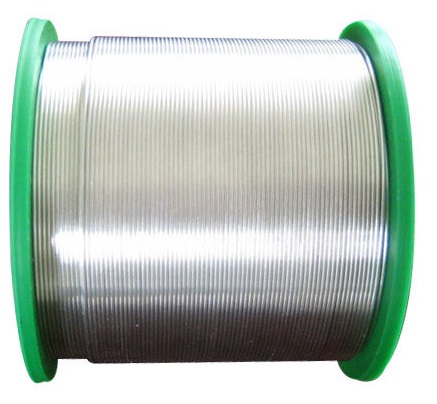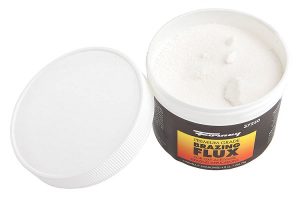And while you may come across various welding alternatives out there, aluminum brazing is considered as one of the best for a large number of reasons. As per the name, it uses aluminum and molten metals to fill in gaps between metals to repair them and join them. But if you wish to know everything in detail regarding aluminum grazing, then you should check out all the aluminum brazing information explained down below.
What is Aluminum Brazing?
Despite the fact there is a lot to consider before using aluminum brazing, it is also essential to learn the basics. Hence, you should first understand what aluminum brazing is and why it is considered as a welding alternative. First, let us first look at the brazing process itself and come to the aluminum part later on. Brazing is a metal fabricating process that includes heating up a given metal or alloy to such high temperatures that it starts melting. Once it melts, you can use it to either weld metal pieces together or fill in cracks and gaps present in any given object. After that, as the temperature of the molten metal falls, it starts to solidify and settle, completing the brazing process. As for aluminum brazing, it is also a brazing process that happens to use aluminum as its primary metal
How the Brazing Process Works?
While we have already mentioned the basics and the overall functioning of the brazing process, you may also want to learn more about aluminum brazing and how the complete process works in detail. It is quite important to learn the functioning of aluminum brazing before you use it to ensure that you do not have any issues as you use it. In order to start the brazing process, you have to first melt the metal you wish to use, which happens to be aluminum in this case. For melting the metal, it is heated just above its melting point and then poured over the place where you wish to braze or make joints. After that, thanks to capillary action, this metal fills all the void spaces. You can also apply flux via powder, paster, liquid, and even brazing rods if needed, as you will see later on in this guide regarding aluminum brazing. If you do not wish to use any flux, you can also consider vacuum aluminum brazing explained later on.
Braze Aluminum Welding Basics
Now that you know the major details of the working of aluminum brazing, there are also few other basics that you should know about. This primarily includes terms like solidus and liquidus. While the solidus temperature tells you about the highest temperature at which your brazing metal stays solid, the liquidus temperature tells you about the lowest temperature at which your brazing metal becomes liquid. If you are going for flux aluminum brazing, you also need to check the type of flux that you are using since you can find all sorts of options out there like paste flux, powder flux, liquid flux and even specialized braze rods.
Advantages of Brazing over Welding
As mentioned earlier, aluminum brazing is a great alternative to welding since it can be used in many similar applications. But if you are going with aluminum brazing over welding, then you might also want to know its advantages. While there are various benefits of going with brazing, here are some of the major ones:
One of the best things about brazing is that it uses lower temperatures than welding. Due to this, it results in better cleanliness and overall better finish as the melted metals do not get affected by air as much as welding. If you wish to join metals or repair metal objects with high precision, then you will be glad to know that brazing offers quite better tolerances. All of the molten metal settles into voids properly via capillary action for great results. Even if you are using non-similar metals, brazing allows you to join them together if needed. This is because, unlike welding, a third metal is molten for the joints, which usually goes great along even with non-similar metals. Those of you who wish to weld a lot of metal pieces will be glad to know that brazing is also more cost-effective. Not only is there less waste of welding materials, but it also requires lower temperatures resulting in lower fuel consumption. If needed, aluminum brazing can also be automated, which can be viable for large-scale operations and where you want the precision of machines instead of humans.
Aluminum Brazing Filler Metals
Since you are going to need a filler metal for your aluminum brazing needs, making sure that you have the right one is quite important. While buying aluminum brazing filler metals, you can find both wire and shim stock options out there. Generally, the filler metal used for brazing is placed at a desired spot via brazing sheets. These sheets are simply aluminum alloy base metal coated on its sides with materials that favor the brazing process. You can also consider using paste or powder flux. Many aluminum brazing filler metals may also have some quantity of magnesium, silicon, zinc, copper, and others in them. This helps to control their melting temperature for even better brazing results.
Aluminum Brazing Flux
Whenever you are performing aluminum brazing, having the right flux with you is highly important. Usually, you will find aluminum brazing flux options to consist of fluorides and chlorides of various metals. As for using the flux, it can be used as a dry powder, as a paste, and even liquid if needed. While paste flux options are ideal for furnace and torch brazing, liquid flux is used for dip brazing.
Practice Metal Brazing Techniques
After learning these various brazing techniques and details, you might be interested in trying out aluminum brazing techniques by yourself. In that case, there are various things to keep in mind while practicing metal brazing which are as follows:
First, make sure that you have proper ventilation in your workspace and you are wearing welding safety equipment before starting brazing. Then, lay a carbon steel pipe on 2 fire bricks placed about ¾ inch away from each other. Now, set your oxyacetylene torch to neutral before using it for brazing. Finally, use the torch to melt a piece of the filler road in a way that it falls on any preferred end of the pipe. As the molten metal is collected, you can use it to melt the filler rod further. For a proper weld, ensure that you are not brazing at high temperatures and smoke is not coming out.
Brazed Joint Design
Just like welding, you should also know the available joint designs that offer the best rigidity. While using aluminum brazing, it is advised to avoid butt or scarf joints. Instead, you should go with something like tee joints which offer excellent capillary flow for high reinforcing fillets on either side of the joint. You can also consider lap joints for high efficiency if the overlap is twice as thick as the thinnest metal object. To get the best lap joint results, you should ensure that the brazing filler metal is flowing only in a single direction.
Brazing Fixtures
In case that you want to use brazing fixtures for added structural support, you can go with stainless steel or inconel springs. These are used to prevent any kind of distortion between the parts due to high temperature. If you are using furnace brazing, then you may have to go with nickel or aluminum-coated steel fixtures.
Precleaning
Similar to welding, it is quite important to clean everything properly while using aluminum brazing. This is quite important to get strong and leak-proof joints made via brazing. For your cleaning needs, you can go with either solvent cleaning or vapor cleaning as per your choice at least when you are talking about non-heat-treatable alloys. On the other hand, heat-treatable alloys require harder cleaning with wire brushes and sandpapers.
Furnace Brazing
Whether you are using gas, oil, or an electrically heated furnace, you can easily perform furnace brazing with the same. You just have to ensure that the temperature variation is less than 5 degree Fahrenheit at all times. If you wish to reduce furnace brazing times, you can consider continuous circulation of the furnace atmosphere.
Conclusion
By checking all the various details present above, you must know all the information regarding aluminum brazing. It is one of the best alternatives to welding and can be used in various applications. There are also aluminum brazing basics stated above so that you can learn it to do yourself as well. If you have gone through all these aluminum brazing details, make sure to share your thoughts in the comments section. You can also post any questions down there if you have any! Comment * Name * Email * Website
Δ







![]()